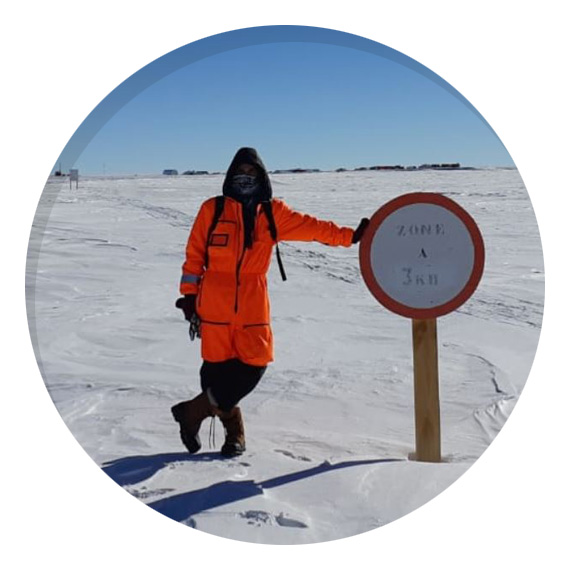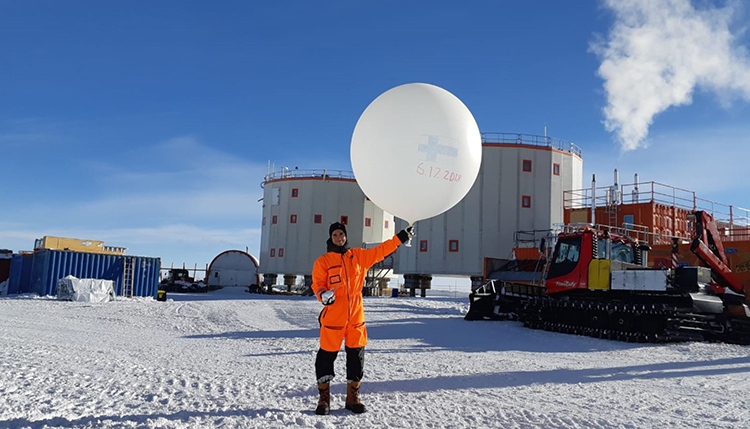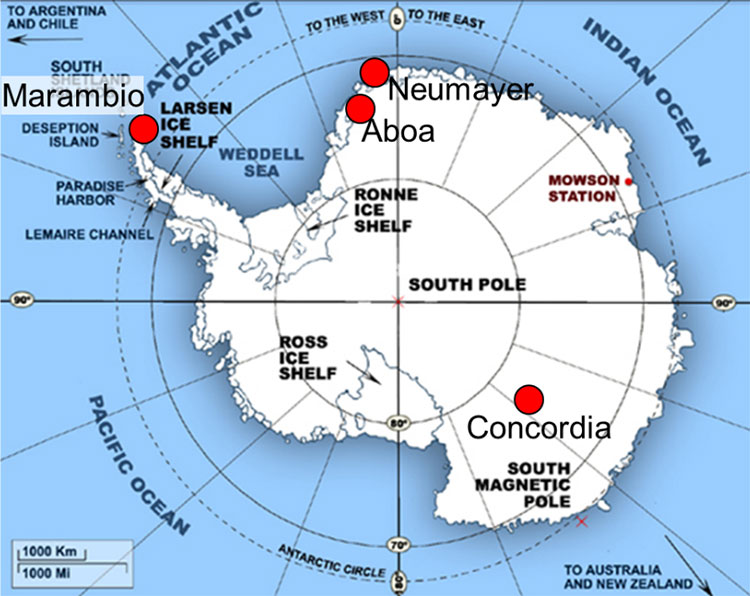The first Finnish atmospheric scientist at Concordia station on the Antarctic

Dr John Backman from the Finnish Meteorological Institute (FMI), as the first Finnish atmospheric scientist ever, takes part in the work at the Concordia station at Dome C on the upper plateau of East Antarctica. The goals of the research are to study the trends, seasonal variations, amount and transport routes of pollutants, such as black carbon from the rest of the world to the cleanest continent, cryosphere-atmosphere interactions and pure atmospheric processes.
"The most scenic landscape I've seen so far was on the way to Concordia when we took off on a domestic flight to Concordia from Terra Nova Bay with sea ice, open water, mountain ridges and volcanoes in the distance", Backman describes.
Concordia is a joint Italian-French station operated year-round on the upper plateau of East Antarctica at Dome C. It is very different from the other stations: the distance to the coast is about 1 000 kilometers and it is high up, 3233 meters above the sea level.
Due to centrifugal forces and strong layering the atmosphere is thinner than at an equivalent altitude in e.g. the European Alps. The same amount of oxygen can be found in e.g. the European Alps at an altitude of 3 700 meters. Usually when arriving at the station the first two days involve no work at all, which quite quickly becomes apparent why.
"The first day I was very dizzy due to the lack of oxygen and on the second day I got a headache after which I started to feel normal again", Backman says. "But running up and down stairs can still be quite hard. When I first arrived the temperature was close to -50 °C but now as summer is approaching, the daily maximum temperatures are a mere -28 °C and expected to hit -25 °C before the end of the year."
During winter months the staff has to be self-reliant
John Backman stays at Concordia station for two months from November 2018 to January 2019. His tasks are to install and operate new scientific instruments and make service and calibration of the previously installed ones. The station is situated on an inland plateau and the surroundings are very flat. The site was chosen there since it is good for ice core drilling; the glacier does not move very much and thus makes drilling for ice cores easier.
"There are no crevasses in the area so it is safe to walk outside without having to be scared of falling down into one", Backman explains.
During summer Concordia can house as much as 81 persons at the station and during winter, when temperatures of down to -80°C are not uncommon, the staff of 13 people will need to be self-reliant for up to 9 months as no flights nor convoys are possible due to the harsh winter conditions.

Unique natural laboratory for studying atmospheric processes
The station is ideal for studying very clean air as the air masses that arrive at the station are one of the cleanest on Earth. This is mainly due to two facts. First, due to the high elevation and close proximity to the pole, airmasses that arrive at the station subside from higher up in the atmosphere and are not advected along the surface where most of the air pollution originates. Secondly, most of the man-made air pollution is emitted in the northern hemisphere where the majority of the Earth's population live.
Concordia is located close to the geomagnetic South Pole which has effects on air ions. At the station there is a clean air facility for atmospheric aerosol and trace gas measurements where Italian scientists from the Institute of Atmospheric Sciences and Climate (CNR-ISAC), Bologna and University of Florence have operated FMI and INAR instruments continuously year-round since 2007.
Further information:
Special Researcher Aki Virkkula, FMI, tel. 029 539 2053, aki.virkkula@fmi.fi
Researcher John Backman, FMI, john.backman@fmi.fi (in Antarctica until the end of January 2019)
Professor Tuukka Petäjä, INAR, tel. 02941 50878, Tuukka.Petaja@helsinki.fi
FMI and the Institute for Atmospheric and Earth System Research (INAR) of University of Helsinki have cooperated in Antarctic research for two decades. In addition to the research at the Finnish Antarctic station Aboa the groups participate in the research conducted at three other measurement stations that have very different natural conditions: the German station Neumayer in coastal Queen Maud Land, the Argentinian station in Marambio at the northern tip of the Antarctic Peninsula, and Concordia.
The research is funded by FMI, INAR and Italian Antarctic research.

